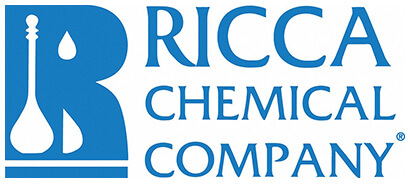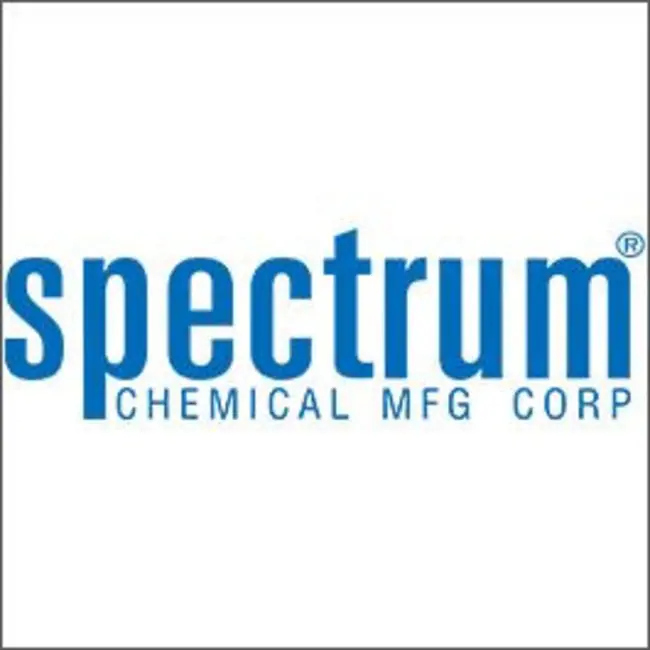Ambient
Showing 71401–71450 of 146505 results
-

Clozapine
$23.95 Add to cart View Product DetailsClozapine
-

Clozapine
$63.08 Add to cart View Product DetailsClozapine
-

Clozapine N-Oxide
$95.74 Add to cart View Product DetailsMolecular Formula : C18 H19 Cl N4 O
-

Clozapine N-Oxide
$327.75 Add to cart View Product DetailsMolecular Formula : C18 H19 Cl N4 O
-

Clozapine N-Oxide
$583.05 Add to cart View Product DetailsMolecular Formula : C18 H19 Cl N4 O
-
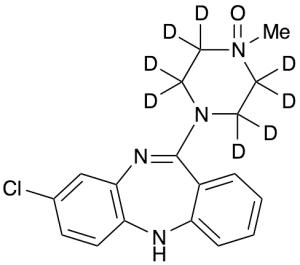
Clozapine N-Oxide-d8
$268.24 Add to cart View Product DetailsMolecular Formula : C18H11D8ClN4O
-

Clozapine N-Oxide-d8
$595.13 Add to cart View Product DetailsMolecular Formula : C18H11D8ClN4O
-

Clozapine-d4
$223.39 Add to cart View Product DetailsMolecular Formula : C18 2H4 H15 Cl N4
-

Clozapine-d4
$466.61 Add to cart View Product DetailsMolecular Formula : C18 2H4 H15 Cl N4
-

Clozapine-d4
$1,418.81 Add to cart View Product DetailsMolecular Formula : C18 2H4 H15 Cl N4
-

Clozapine-d8
$209.59 Add to cart View Product DetailsMolecular Formula : C18H11D8ClN4
-

Clozapine-d8
$1,538.70 Add to cart View Product DetailsMolecular Formula : C18H11D8ClN4
-
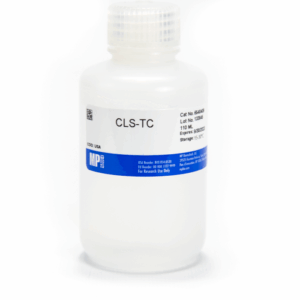
CLS-TC
$110.11 Add to cart View Product DetailsCell Lysis/DNA solubilizing solution for tissues and cell extractions. Used in conjunction with a Protein Precipitation Solution (PPS). Component of the FastDNA Kit and FastDNA SPIN Kit.
-

CMPD101
$118.16 Add to cart View Product DetailsMolecular Formula : C24H21F3N6O
-

CMPD101
$257.03 Add to cart View Product DetailsMolecular Formula : C24H21F3N6O
-

CMPF
$79.35 Add to cart View Product DetailsMolecular Formula : C12H16O5
-

CMPF
$138.00 Add to cart View Product DetailsMolecular Formula : C12H16O5
-

CMPF
$224.25 Add to cart View Product DetailsMolecular Formula : C12H16O5
-
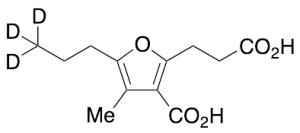
CMPF-d3 (Major)
$180.26 Add to cart View Product DetailsMolecular Formula : C12D5H11O5
-

CMPF-d3 (Major)
$757.28 Add to cart View Product DetailsMolecular Formula : C12D5H11O5
-

CMPF-d3 (Major)
$1,304.10 Add to cart View Product DetailsMolecular Formula : C12D5H11O5
-
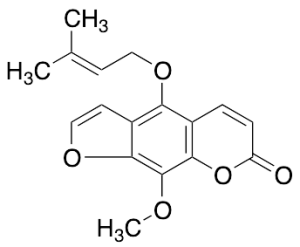
Cnidilin
$358.80 Add to cart View Product DetailsMolecular Formula : C17H16O5
-

Cnidilin
$595.13 Add to cart View Product DetailsMolecular Formula : C17H16O5
-

CNTF, Human
$1,073.81 Add to cart View Product DetailsCiliary Neurotrophic Factor (CNTF) is a cytokine belonging to the Interleukin 6 (IL-6) family, which also includes IL-6, Oncostatin M, Leukemia Inhibitory Factor (LIF), and Cardiotrophin-1. Structurally, CNTF resembles a four-helix bundle composition, similar to the other members of the IL-6 family. The receptor for CNTF is composed of three parts: a gp130-like subunit common in the IL-6 receptor family, a LIF Receptor β subunit, and a CNTF specific α receptor subunit. Upon binding to the CNTF, the β subunit of the CNTF receptor will undergo tyrosine phosphorylation, and activate the intracellular JAK/STAT pathway. The main function of CNTF in vivo is to promote the differentiation and survival of a variety of neurons and glial cells, including sympathetic precursor cells and spinal motor neurons.
-

CNTF, Human
$63.83 Add to cart View Product DetailsCiliary Neurotrophic Factor (CNTF) is a cytokine belonging to the Interleukin 6 (IL-6) family, which also includes IL-6, Oncostatin M, Leukemia Inhibitory Factor (LIF), and Cardiotrophin-1. Structurally, CNTF resembles a four-helix bundle composition, similar to the other members of the IL-6 family. The receptor for CNTF is composed of three parts: a gp130-like subunit common in the IL-6 receptor family, a LIF Receptor β subunit, and a CNTF specific α receptor subunit. Upon binding to the CNTF, the β subunit of the CNTF receptor will undergo tyrosine phosphorylation, and activate the intracellular JAK/STAT pathway. The main function of CNTF in vivo is to promote the differentiation and survival of a variety of neurons and glial cells, including sympathetic precursor cells and spinal motor neurons.
-

CNTF, Human
$155.25 Add to cart View Product DetailsCiliary Neurotrophic Factor (CNTF) is a cytokine belonging to the Interleukin 6 (IL-6) family, which also includes IL-6, Oncostatin M, Leukemia Inhibitory Factor (LIF), and Cardiotrophin-1. Structurally, CNTF resembles a four-helix bundle composition, similar to the other members of the IL-6 family. The receptor for CNTF is composed of three parts: a gp130-like subunit common in the IL-6 receptor family, a LIF Receptor β subunit, and a CNTF specific α receptor subunit. Upon binding to the CNTF, the β subunit of the CNTF receptor will undergo tyrosine phosphorylation, and activate the intracellular JAK/STAT pathway. The main function of CNTF in vivo is to promote the differentiation and survival of a variety of neurons and glial cells, including sympathetic precursor cells and spinal motor neurons.
-

CNTF, Mouse
$2,238.19 Add to cart View Product DetailsCiliary neurotrophic factor (CNTF) is a polypeptide hormone whose actions appear to be restricted to the nervous system where it promotes neurotransmitter synthesis and neurite outgrowth in certain neuronal populations. CNTF was initially identified as a trophic factor for embryonic chick ciliary parasympathetic neurons in culture. Furthermore, the protein is also a potent survival factor for neurons and oligodendrocytes and may be relevant in reducing tissue destruction during inflammatory attacks. In addition, CNTF is useful for treatment of motor neuron disease and it could reduce food intake without causing hunger or stress. Recombinant murine CNTF containing 198 amino acids and it shares 82 % and 95 % a.a. sequence identity with human and rat CNTF.
-

CNTF, Mouse
$90.56 Add to cart View Product DetailsCiliary neurotrophic factor (CNTF) is a polypeptide hormone whose actions appear to be restricted to the nervous system where it promotes neurotransmitter synthesis and neurite outgrowth in certain neuronal populations. CNTF was initially identified as a trophic factor for embryonic chick ciliary parasympathetic neurons in culture. Furthermore, the protein is also a potent survival factor for neurons and oligodendrocytes and may be relevant in reducing tissue destruction during inflammatory attacks. In addition, CNTF is useful for treatment of motor neuron disease and it could reduce food intake without causing hunger or stress. Recombinant murine CNTF containing 198 amino acids and it shares 82 % and 95 % a.a. sequence identity with human and rat CNTF.
-

CNTF, Mouse
$293.25 Add to cart View Product DetailsCiliary neurotrophic factor (CNTF) is a polypeptide hormone whose actions appear to be restricted to the nervous system where it promotes neurotransmitter synthesis and neurite outgrowth in certain neuronal populations. CNTF was initially identified as a trophic factor for embryonic chick ciliary parasympathetic neurons in culture. Furthermore, the protein is also a potent survival factor for neurons and oligodendrocytes and may be relevant in reducing tissue destruction during inflammatory attacks. In addition, CNTF is useful for treatment of motor neuron disease and it could reduce food intake without causing hunger or stress. Recombinant murine CNTF containing 198 amino acids and it shares 82 % and 95 % a.a. sequence identity with human and rat CNTF.
-

CNTF, Rat
$1,323.94 Add to cart View Product DetailsCiliary Neurotrophic Factor (CNTF) is a polypeptide hormone which acts within the nervous system where it promotes neurotransmitter synthesis and neurite outgrowth in certain neuronal populations. CNTF is a potent survival factor for neurons and oligodendrocytes and may play a role in reducing tissue damage during increased inflammation. A mutation in this gene, which results in aberrant splicing, leads to ciliary neurotrophic factor deficiency, however this phenotype is not causally related to neurologic disease.
-

CNTF, Rat
$63.83 Add to cart View Product DetailsCiliary Neurotrophic Factor (CNTF) is a polypeptide hormone which acts within the nervous system where it promotes neurotransmitter synthesis and neurite outgrowth in certain neuronal populations. CNTF is a potent survival factor for neurons and oligodendrocytes and may play a role in reducing tissue damage during increased inflammation. A mutation in this gene, which results in aberrant splicing, leads to ciliary neurotrophic factor deficiency, however this phenotype is not causally related to neurologic disease.
-

CNTF, Rat
$155.25 Add to cart View Product DetailsCiliary Neurotrophic Factor (CNTF) is a polypeptide hormone which acts within the nervous system where it promotes neurotransmitter synthesis and neurite outgrowth in certain neuronal populations. CNTF is a potent survival factor for neurons and oligodendrocytes and may play a role in reducing tissue damage during increased inflammation. A mutation in this gene, which results in aberrant splicing, leads to ciliary neurotrophic factor deficiency, however this phenotype is not causally related to neurologic disease.
-
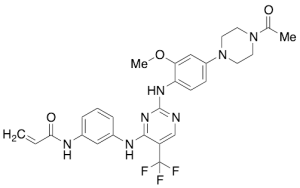
CO 1686
$106.09 Add to cart View Product DetailsMolecular Formula : C27H28F3N7O3
-

CO 1686
$204.41 Add to cart View Product DetailsMolecular Formula : C27H28F3N7O3
-

CO 1686
$302.74 Add to cart View Product DetailsMolecular Formula : C27H28F3N7O3
-
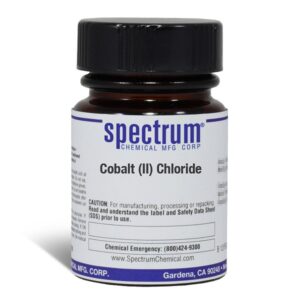
Cobalt (II) Chloride
$477.46 Add to cart View Product DetailsCobalt (II) Chloride
-
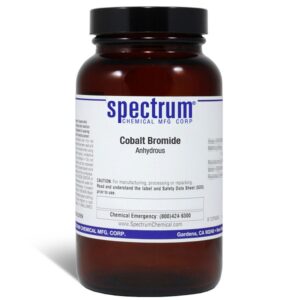
Cobalt Bromide, Anhydrous
$908.49 Add to cart View Product DetailsCobalt Bromide, Anhydrous
-
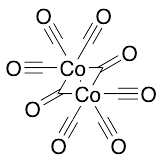
Cobalt Carbonyl (Stabilized with 1-5% Hexane)
$81.94 Add to cart View Product DetailsMolecular Formula : C8Co2O8
-

Cobalt Carbonyl (Stabilized with 1-5% Hexane)
$106.09 Add to cart View Product DetailsMolecular Formula : C8Co2O8
-

Cobalt Carbonyl (Stabilized with 1-5% Hexane)
$136.28 Add to cart View Product DetailsMolecular Formula : C8Co2O8
-

Cobalt Chloride Hexahydrate, ACS
$54.22 Add to cart View Product DetailsCobalt Chloride Hexahydrate
-

Cobalt Chloride Hexahydrate, ACS
$73.39 Add to cart View Product DetailsCobalt Chloride Hexahydrate
-

Cobalt Chloride Hexahydrate, ACS
$313.66 Add to cart View Product DetailsCobalt Chloride Hexahydrate
-

Cobalt chloride hexahydrate, ACS
$25.73 Add to cart View Product DetailsCobalt Chloride Hexahydrate
-

Cobalt chloride hexahydrate, ACS
$49.60 Add to cart View Product DetailsCobalt Chloride Hexahydrate
-

Cobalt chloride hexahydrate, ACS
$83.38 Add to cart View Product DetailsCobalt Chloride Hexahydrate
-

Cobalt Chloride Hexahydrate, cell culture reagent
$29.38 Add to cart View Product DetailsCobalt Chloride, Hexahydrate
-

Cobalt Chloride Hexahydrate, cell culture reagent
$98.43 Add to cart View Product DetailsCobalt Chloride, Hexahydrate
-

Cobalt Chloride Hexahydrate, cell culture reagent
$205.44 Add to cart View Product DetailsCobalt Chloride, Hexahydrate
-
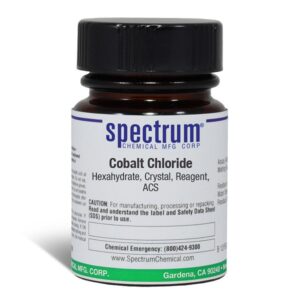
Cobalt Chloride, Hexahydrate, Crystal, Reagent, ACS
$46.62 Add to cart View Product DetailsCobalt Chloride, Hexahydrate, Crystal, Reagent, ACS


